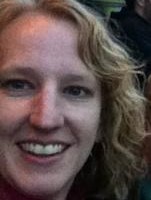I was about halfway through Shambhala: The Sacred Path of the Warrior, by Chogyam Trungpa when The Shambhala Principle arrived at my door.
It was written by Sakyong Mipham, Chogyam Trungpa’s son.
It arrived just in time—in my work for elephant journal I’ve spent a lot more time than I used to scouring the internet for interesting stories and current events.
What I’ve learned is this: The current state of events is not good.
People are sick, hungry and dying. Wars are being raged. Our entire food supply is tainted. We are breathing toxic air. Sea levels continue to rise and most people don’t seem to really give a shit. I can keep going, but I won’t.
Essentially, I’m distraught about the state of the world. I’m worried that we are heading in a bad direction, and that we are about to destroy ourselves.
Enter The Shambhala Principle.
In his own words, Mipham says the book is the result of various dialogues with his father regarding the “themes that were so dear to him,” which is mainly that “humanity and society are basically good.”
Mipham wrote the book after becoming a father and consequently contemplating the world his child will live in. He says, “We humans have come to a crossroads in our history: we can either destroy the world or create a good future.”
The book’s aim is to take the teachings of Mipham’s father and distill them into a reference point for coping with our fast-paced, often difficult, present-day world, and seeks to draw the connection between our personal lives and society. Its ultimate aim is to help us create that “good future.”
As he argues, “Despite the modern world’s efficiency and industry, at an emotional level, the human spirit has been dampened…It is at a low point, connected in particular to a habitual sense of inadequacy. We are in an age where depression arises from people feeling disempowered. There is a resolute feeling that the world may not in fact be all that good.”
And “the fact that our society is experiencing a high level of fear and doubt is a signal for humanity not to give up, but rather to engage further with our enlightened tendencies.”
In essence, the book is a call to action.
It is divided into four parts, each with its own focus point for connecting our personal and spiritual lives to that of the societal level. Throughout the book we are offered guidance on how we can use our own basic goodness to effect change at bigger levels.
One does not need to be a Buddhist or a scholar to find value in the book. Though I’ve been studying the works Pema Chodron (Chogyam Trungpa’s student) for years, and am somewhat familiar with Chogyam Trungpa teachings, I’ve only just begun reading his actual texts. So, though I’m not well-versed on the direct teachings, I found enormous value and relevance to not only my life, but the society in which we live.
Those already familiar with his teachings and newbies like me will appreciate a modern day interpretation of this wisdom.
I started the book in a place of disillusionment and cynicism, and finished it feeling as though the things that are causing me strife are the exact things that are calling me to get to work. I felt empowered.
The book allowed me to see that focusing on what’s bad isn’t going to change anything. Rather, if I start from the viewpoint that we are actually good (despite what the media will have us believe), then I can use my innate goodness to help effect change.
Like elephant Reviews on Facebook.
~
Asst. Editor: Edith Lazenby/Ed: Bryonie Wise








Read 0 comments and reply